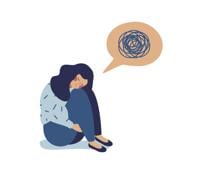At some point in your life, you’ve likely experienced feelings of loneliness. It could be from missing a family member or the company of a favorite pet. Or it may stem from being the new person at work and not knowing your way around the office. It might even originate from an overextension of “me time.” Loneliness may be more present these days during the novel coronavirus outbreak and associated societal response.
“During a pandemic, when people stay home more, problems associated with loneliness and depression will skyrocket,” says Matt Grzesiak, a psychologist and therapist based in San Mateo, California. “We feel lonely for a simple reason — humans are social species and need others to function; to love and feel loved, release negative emotions, share positive experiences, bond and create relationships. This era is especially loneliness-prone. Nowadays, loneliness is a global problem.”
Understanding Loneliness
Research has shown that loneliness can affect people in many different ways. For that reason, there are a few distinct types that psychologists have identified, including emotional, social, situational and chronic. Loneliness can have a wide range of negative effects on our physical and mental health.
“Yes, loneliness is dangerous,” Grzesiak says. “It can lead to depression and suicide, cardiovascular problems, increased stress and causes issues at school. It can also lead to antisocial behavior, addictions, impaired decisions and altered brain functions.”
Loneliness is a complex human experience, says Deborah Serani, an author and a psychology professor at Adelphi University in Garden City, New York. It is defined when a child or an adult feels unspeakably alone, sad, empty and unwanted.
“Lonely people crave to be with others and miss the attachment to them deeply,” she says. “Why loneliness occurs is different from person to person. It may happen because a person is very shy and finds it hard to connect to others. Or they may be cast aside by peers or family members — or forgotten in ways that leave them experiencing great social isolation.”
Fighting the Sad Feelings
Early signs of loneliness and subsequent signs of depression include feelings of helplessness and hopelessness, a loss of interest in daily activities, a loss of appetite, losing or gaining weight, problems falling asleep, being angry, lack of energy, feeling self-hatred, becoming critical toward yourself, an inability to concentrate and/or physical symptoms such as stomach pain or back pain, Grzesiak says.
He adds that loneliness doesn’t discriminate against race, age or gender.
“Loneliness naturally flows throughout life,” he says. “For example, it is normal for younger populations in their 20s to feel lonely because they focus mostly on work and not relationship building. Loneliness is highest among young adults, declines over midlife, and increases in old age. There is also a cultural aspect to it. Millennials are individualistic and choose to prioritize their own individual growth over relationships with others. They create a culture where personal achievements and personal well-being are considered more important than connections to others.”
According to Serani, people can fight back against these feelings and emotions. She offers these tips:
- “Reach out to friends and family with a phone call or a personal visit. Talk about your feelings of isolation to cue in your loved ones. If you have a significant other, tell him or her that you’re feeling lonely in the relationship. Sharing your feelings helps open the door to greater social involvement.”
- “Consider adopting a pet. Creating a bond with a dog, cat or other animal companion can ease feelings of loneliness and improve well-being.”
- “Get exercise and sunlight. Studies show that walking, yoga, swimming and other kinds of movement reduce depressive symptoms.”
For homebound children or adults, she says, in-person visits, phone calls and old-school mailed cards can lift symptoms of loneliness in a family or friend.
“If you want your loved one to have more involvement, seek services like Meals on Wheels, Visiting Friends, pet visit programs, as well as Reach Out and Read library services’ in your community,” Serani says.













